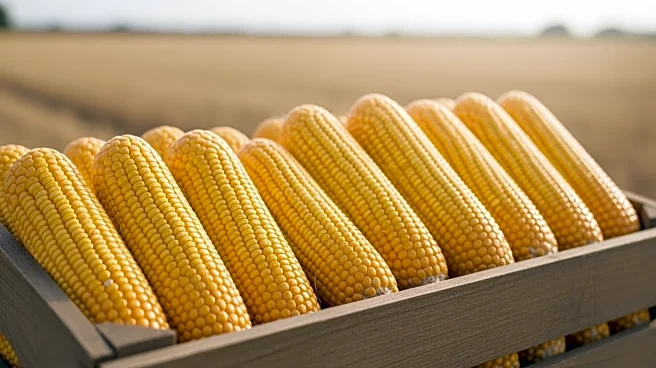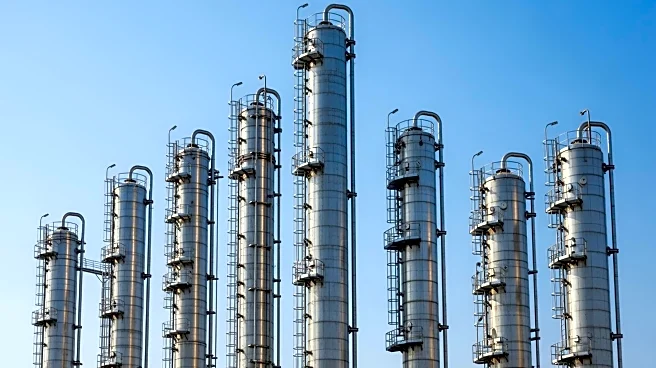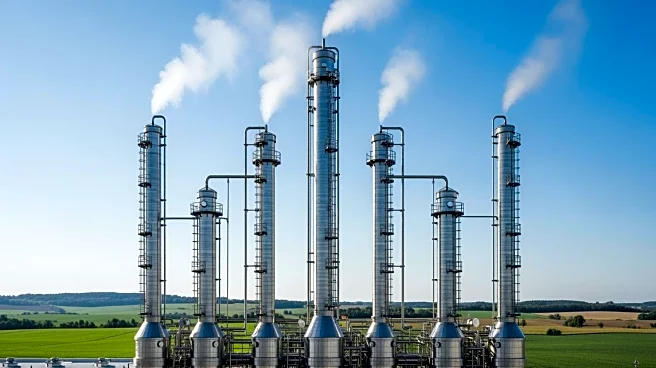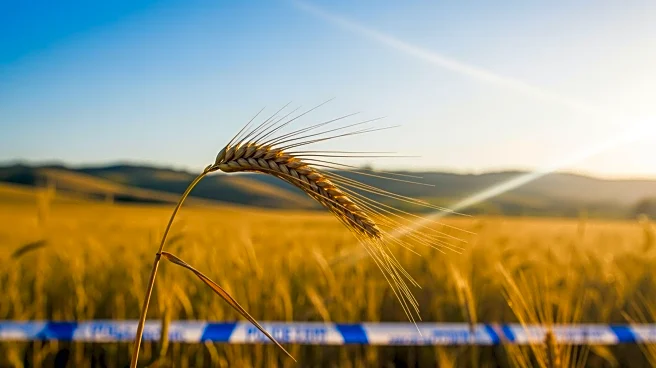What's Happening?
Ethanol production in the U.S. has reached its highest level in five weeks, averaging 1.074 million barrels per day, according to the Energy Information Administration. Despite this increase, ethanol inventories
have declined to 22.628 million barrels, marking the lowest level in a month. Concurrently, grain and soybean futures have risen due to technical buying and concerns over yield reductions caused by recent dry weather. Approximately 38% of a key agricultural region, including Iowa and Illinois, is experiencing drought conditions, impacting crop yields.
Why It's Important?
The rise in ethanol production and fluctuating grain and soybean markets have significant implications for the U.S. agricultural sector. Ethanol production is a key driver of demand for corn, influencing market prices and farmer income. The drought conditions affecting major agricultural states could exacerbate yield reductions, impacting supply and potentially leading to higher prices for consumers. These developments may prompt discussions on agricultural policy, including support for farmers and strategies to mitigate climate-related impacts on crop production.
What's Next?
As the government shutdown continues, the absence of weekly crop progress reports from the USDA may create uncertainty in the agricultural markets. Producers and market-watchers will likely monitor weather patterns and drought conditions closely, as these factors could further influence crop yields and market dynamics. Additionally, ongoing discussions about ethanol production and renewable energy policies may shape future industry trends and regulatory frameworks.
Beyond the Headlines
The environmental impact of ethanol production and agricultural practices is a critical consideration, as these activities contribute to carbon emissions and resource consumption. Policymakers and industry leaders may need to address sustainability challenges by promoting eco-friendly practices and technologies. The cultural significance of agriculture in the U.S. underscores the need for responsible stewardship of natural resources and support for rural communities.











